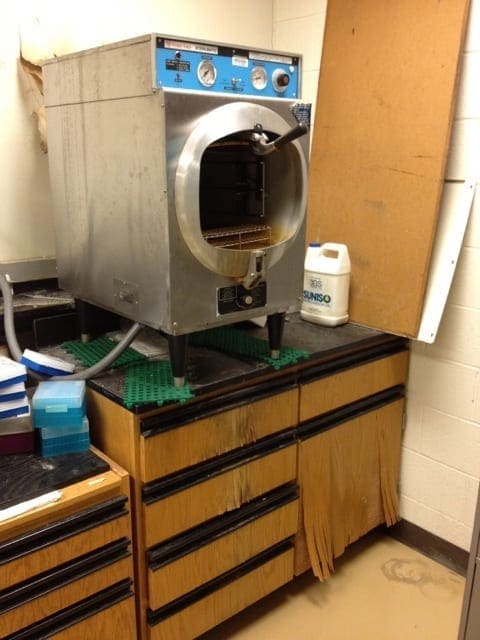Spotting Red Flags: Planning, Training & Internalizing Safe Autoclave Procedures
By: Priorclave North America
Category: Health & Safety
Establishing, training in, and rigorously following safe autoclave procedures can make the difference between a regular day at the lab and disaster. Don’t believe us? Try this thought experiment:
Spotting and avoiding red flags for autoclave lab safety
Imagine: you’re on the verge of discovery and your co-worker who hogs the autoclave got there seconds ahead of you. It’s over your shoulders, but the top one is your favorite, too, dang! You set a timer for the end of their run time and race back when it goes off. But your co-worker went on break! Your discovery waits for that good-for-nothing to finish their tuna sandwich.

Poor autoclave installations undermine safe autoclave procedures
🚩Determined to move forward, you decide to hustle their stuff out of the autoclave and onto one of the benches because it’s. Your. Turn.
🚩You don’t bother to drag the platform ladder over, it’s heavy and the step stool will do. Are those safe autoclave procedures? Not really.
🚩And you don’t need the hydraulic cart, which is on the other side of the room for some reason — no one puts stuff where it belongs!—so you open up the autoclave and pull out its contents, even though an intern sees you and goes to grab a cart. Could you wait? Yeah, but you’ve waited long enough.
🚩You have gloves, but no Tyvek coat or rubber apron, you left them at your bench. Safe autoclave procedures call for them, but this is quick. It’s fine, you think, gloves are enough.
🚩No one updated the log (surprise!) so, wondering what’s inside, you pull the glassware out of the autoclave in plastic trays. The trays are hot and the beakers are boiling, putting off gas.
🚩Whoa! The trays are a lot heavier than you thought and —!!—there they go. You watch them slip from your hands as you stumble backwards on the stool. Now the glass is breaking, the liquid inside pouring down your chest and thighs, burning. Not only are you in physical pain, but your discovery is still far off, your colleague’s data ruined too.
If you’d waited and followed safe autoclave procedures, this could’ve been a typical day at the office.
You may be reading this dramatization (based on findings after a real autoclave accident) thinking it could never be you—but it could. And that’s why we work together to plan, train in, and internalize safe autoclave procedures and protocols—so you can spot red flags before you run right through them. Learn more with us about safe autoclave procedures here!

